Looking for something specific? Use the search tool:
https://rookleys.com/search
-
Molly Lamb Bobak (1920–2014) brought modern life to canvas, known for her paintings of women in the war, bustling crowds, home interiors, and flowers. Raised in a home immersed in the arts, she went on to study at the Vancouver School of Art. In 1945, with the help of A. Y. Jackson, she broke ground as the only female official Canadian war artist. That same year, she married fellow painter Bruno Bobak, and the couple later settled in Fredericton in 1961. Throughout her career as an artist and teacher, Bobak gained lasting acclaim, with her works now featured in major Canadian collections.
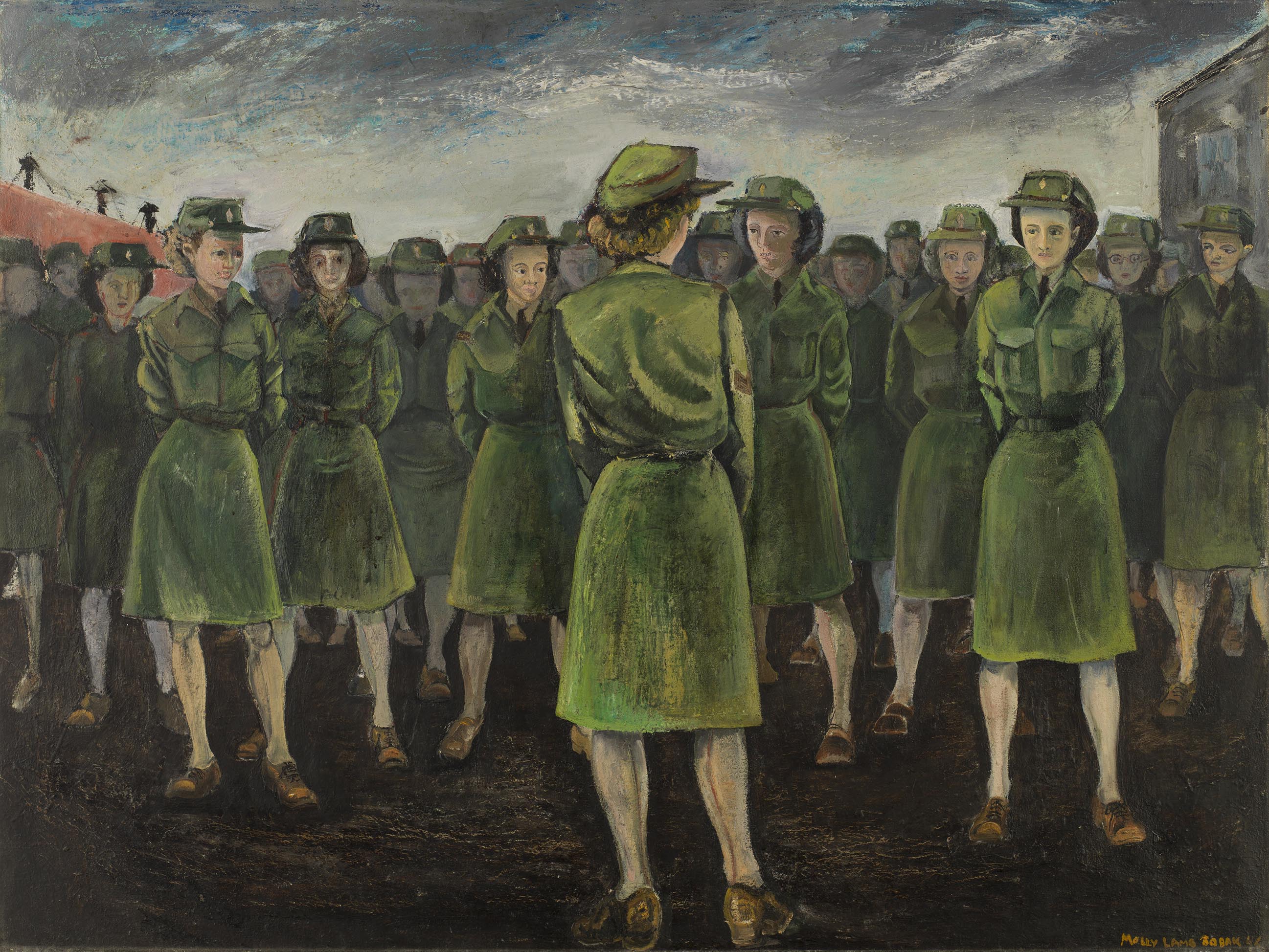 Women in Service by Molly Lamb Bobak
Women in Service by Molly Lamb Bobak -
Harold Barling Town was a Toronto-born artist and one of Canada’s leading abstract artists. Town was best known for his abstract expressionist paintings, though he worked across multiple media and styles, such as drawing, prints, collage and assembly. Town was a key figure in introducing abstract expressionism to Canada. He worked for years as a commercial illustrator, with his work appearing in magazines such as Maclean’s and Mayfair, which provided a foundation that later inspired his experimental abstract art.
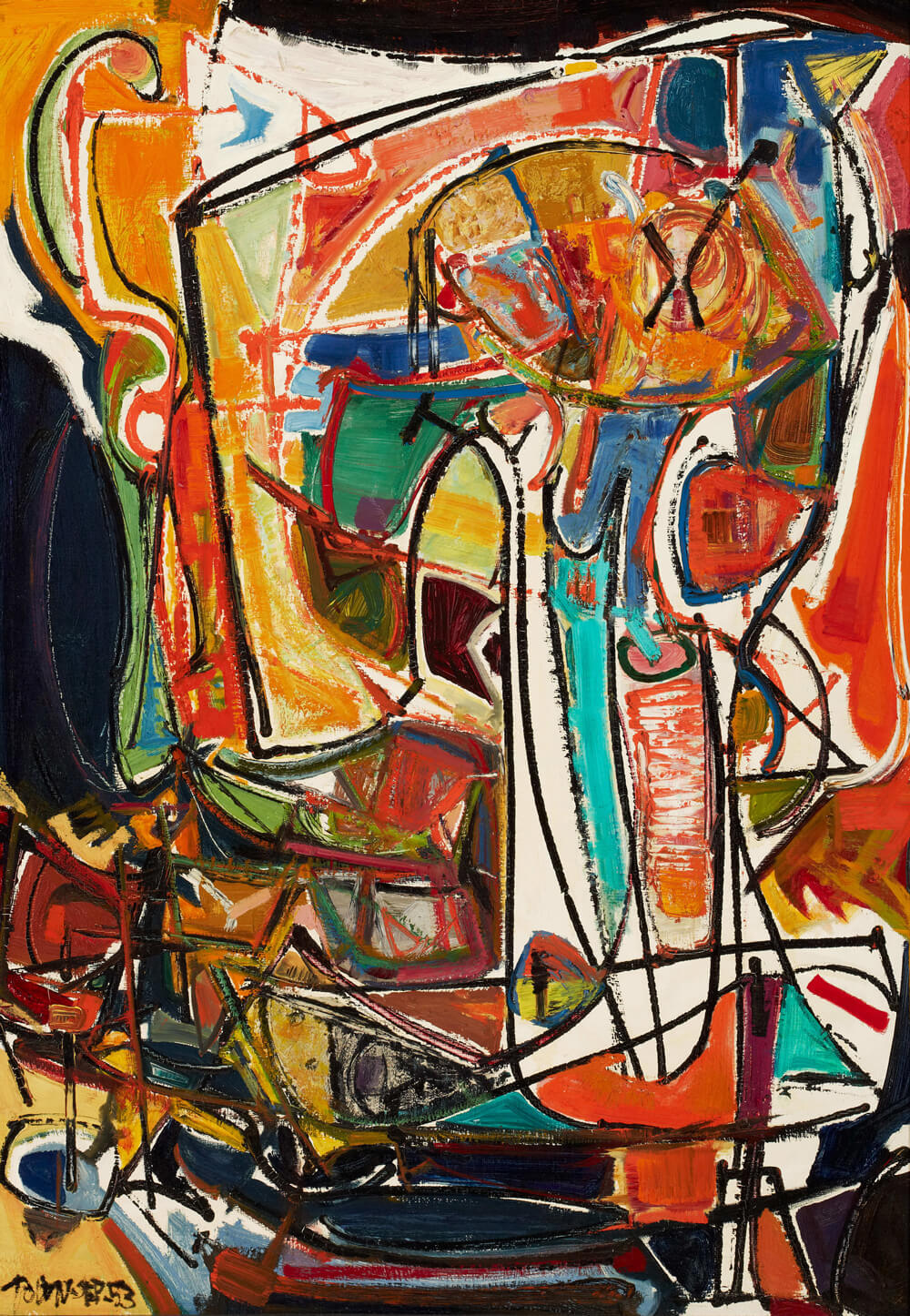 Day Neon, 1953, oil on masonite by Harold Town
Day Neon, 1953, oil on masonite by Harold Town -
In terms of Canadian art history, few groups have had as bold and transformative an impact as Painters Eleven. Active from 1953 to 1960, this Toronto-based group of abstract painters broke away from the long-dominant landscape tradition popularized by the Group of Seven and introduced abstract expressionism to English Canada. This was at a time when abstract art was still largely misunderstood, and often outright rejected, by the mainstream public and critics.

January ’58, 1958, watercolour, pastel and coloured paper on illustration board by Tom Hodgson (1924–2006)
-
Bertram Charles Binning, commonly known as B.C. Binning, was a visionary Canadian artist and educator whose influence shaped Vancouver’s cultural landscape throughout the mid-20th century. Born in Medicine Hat, Alberta, in 1909, Binning first gained recognition for his intricate and witty drawings, which he exhibited widely until 1946, when he introduced his first semi-abstract paintings. He was heavily inspired by the costal scenery of Vancouver, where his family settled after leaving Alberta, and the maritimes would define much of his work. On the topic of painting maritime scenes, Binning said, “there’s always something curious happening—a small boy fishing, a man furling his sails, somebody rowing from one side of the bay to another.”

Fair Weather Signals, 1950, sketch by Bertram Binning
-
Marc-Aurèle Suzor-Coté (1869–1937) is recognized as one of the most versatile artists in French Canada. A pioneer of Impressionism in Quebec, Suzor-Coté played a crucial role in introducing modern French techniques to Canadian art, while combining them with a distinctly Canadian subject matter.
 Oak Ridge, 1908, oil on canvas by Marc-Aurèle de Foy Suzor-Coté
Oak Ridge, 1908, oil on canvas by Marc-Aurèle de Foy Suzor-Coté -
Kathleen Moir Morris (1893-1986) was a Canadian painter renowned for her urban and rural Quebec scenes. She is best known for being an active member of the Beaver Hall Group, a collective of Canadian modernist artists, and exhibited widely across Canada and internationally. Although Morris was born with cerebral palsy, a neurological disorder which impacted her speech and motor skills, she embraced both life and art with joy. There is some speculation as to whether Morris had cerebral palsy or another more rare neurological disorder.
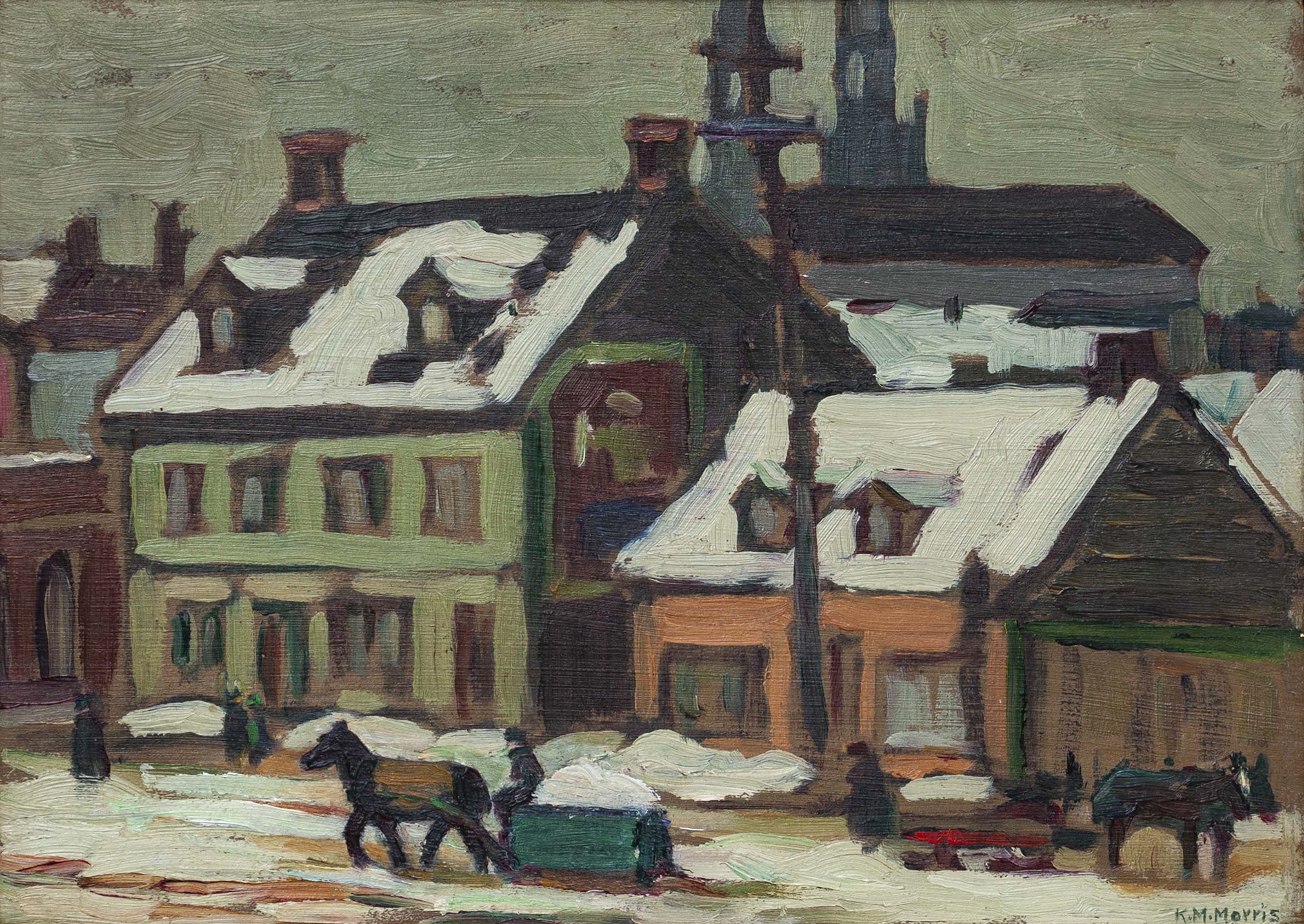
Snow Carts, Lower Town, Quebec, c 1925, oil on panel by Kathleen Moir Morris
-
Ivan Kenneth Eyre (1935-2022) is recognized as one of Canada’s leading modernist painters, known for his panoramic landscapes and figure silhouettes. Over a career spanning more than six decades, Ivan Eyre has developed a distinctive artistic style, blending elements of realism, abstraction, and personal symbolism to depcit the Canadian landscape and the human figure. Eyre’s paintings and drawings have been shown in exhibitions around the world and are represented in many major public collections across Canada. He was referred to as both a “visual philosopher” and a “true outsider and visionary”.
 Amber Pass, 1992, oil on canvas by Ivan Eyre
Amber Pass, 1992, oil on canvas by Ivan Eyre -
Albert Henry Robinson (1881–1956) is recognized as one of Canada’s foremost early 20th-century painters, known for his landscapes of Quebec’s countryside and villages. He was a guest exhibitor in the 1920 inaugural Group of Seven exhibition, and he continued to exhibit with the Group for 8 more exhibitions. He was also a founding member of both the Beaver Hall Group in 1920 and the Canadian Group of Painters in 1933. His compositions often reflected the flowing, horizontal structure similar to the terrain seen in A.Y. Jackson’s work, his frequent sketching companion. He distinguished his paintings through distinctive colour choices such as coral tones, soft pinks, and deep blues. He has been described as a “Painter’s Painter” and painted with square brushes.

Returning from Easter Mass, 1921, oil on wood by Albert Henry Robinson
-
Helen McNicoll (1879–1915) is recognized as one of Canada’s most accomplished female Impressionist painters of the early 20th century. McNicoll was instrumental in introducing and popularizing Impressionism in Canada, creating luminious paintings of sunlit outdoor scenes, children at play, and contemporary women that helped bring Impressionism to a wider audience. Today, her paintings are held in major public collections, including the National Gallery of Canada, the Art Gallery of Ontario, and the Montreal Museum of Fine Arts.
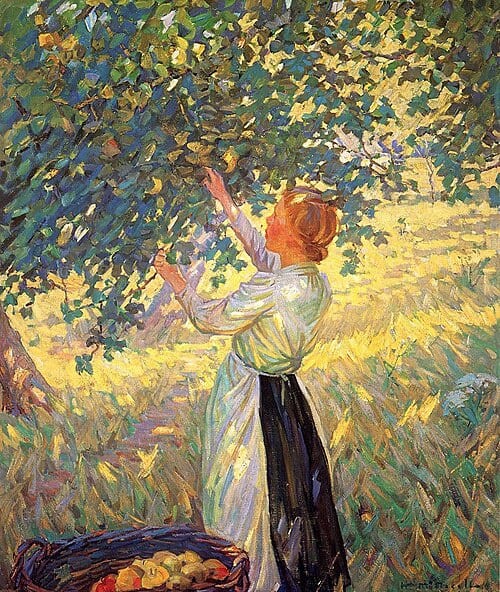
The Apple Gatherer, c 1911, oil on canvas by Helen McNicoll
-
Cornelius Krieghoff (1815–1872) is one of Canada’s earliest and most recognized painters, known widely for his paintings of 19th-century rural and Indigenous life in Quebec. His detailed and often romanticized genre scenes of habitant farmers, First Nations communities, and winter Canadian landscapes have become iconic representations of early colonial life in Canada.
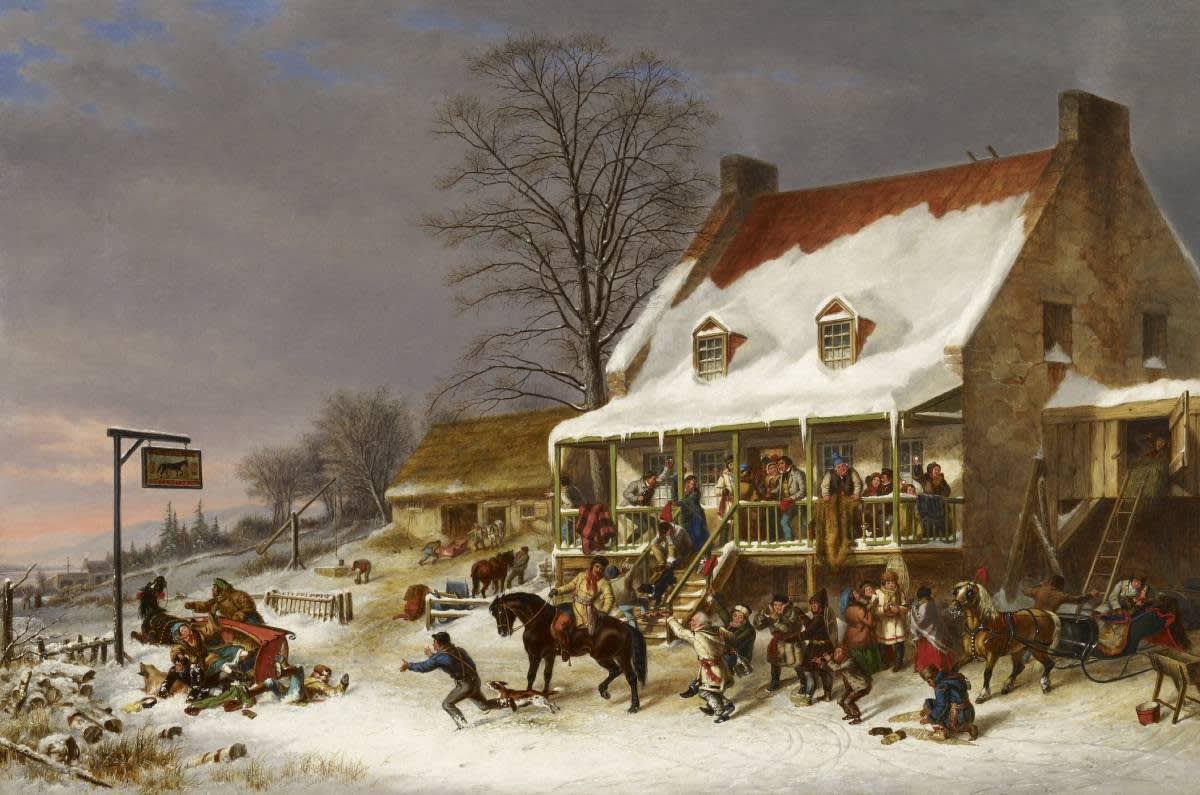
Breaking Up of a Country Ball in Canada, Early Morning, 1857 by Cornelius Krieghoff. The Thomson Collection at the Art Gallery of Ontario.
-
Edward John (E.J.) Hughes (1913–2007) is know as one of the most skilled British Columbia landscape painters of the mid-20th century. Hughes is recognised for his distinctive paintings of BC's coastal landscapes, small towns, and harbours. He is reffered to as a folk realist, where his paintings and watercolours were executed in a controlled manner, with flattened space and a graphic sensibility. His paintings remain highly sought after by collectors and institutions across Canada.
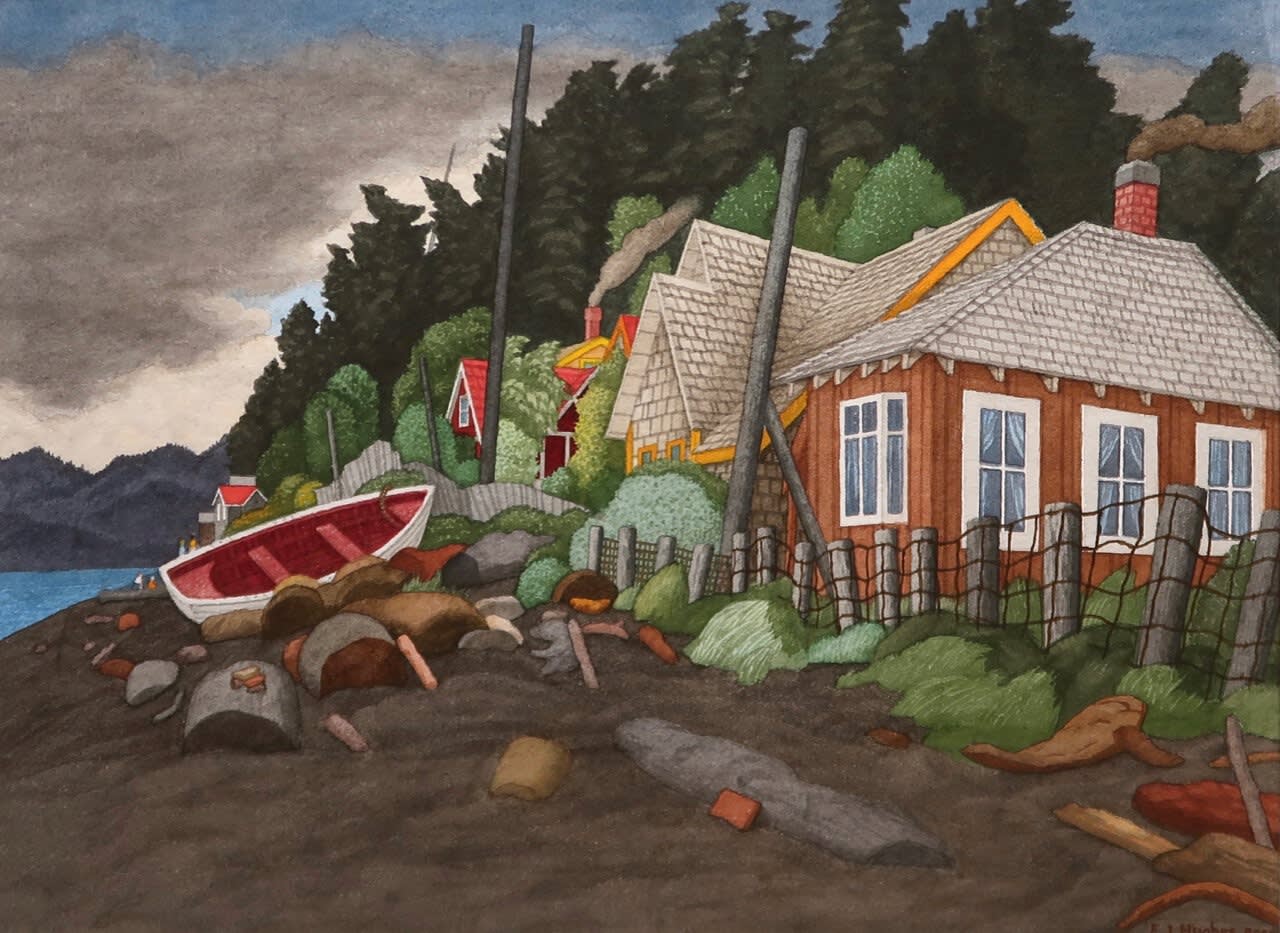
Houses, Qualicum Beach, 2000 by E. J. Hughes
-
Jean Paul Lemieux (1904–1990) is widely regarded as one of the most important figures in 20th-century Canadian art. Lemieux is best known for his paintings of Quebec landscapes and solitary figures, where he developed a distinct style of minimalism, simplified forms, and overarching themes of introspection. His work played a major role in shaping modern art in Quebec and continues to be highly influential in Canadian art history.
Jean Paul Lemieux, Summer of 1914 (L’été de 1914), 1965, oil on canvas
-
 Kitwancool, circa 1928 by Emily CarrEmily Carr (1871–1945) is recognized as one of Canada’s most important painters and writers. Known for her paintings of the British Columbia landscape and Indigenous villages, Carr played a key role in shaping Canadian modern art. Her work captures the forests, coastal scenes, and cultural history of the Pacific Northwest with a distinctive style rooted in modernist painting.
Kitwancool, circa 1928 by Emily CarrEmily Carr (1871–1945) is recognized as one of Canada’s most important painters and writers. Known for her paintings of the British Columbia landscape and Indigenous villages, Carr played a key role in shaping Canadian modern art. Her work captures the forests, coastal scenes, and cultural history of the Pacific Northwest with a distinctive style rooted in modernist painting.